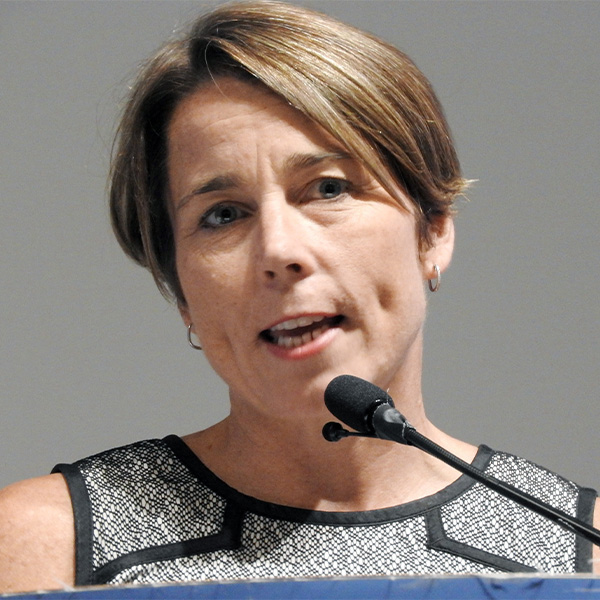MISO made several maneuvers in 2022 to position itself for a majority-renewable portfolio while attempting to take the sting out of an escalating capacity deficit in its entire Midwest territory.
After years of warnings from MISO leadership, the portfolio transition is in full swing in the footprint.
And MISO’s 2023 docket includes planning the next round of long-range transmission projects, navigating expected capacity shortfalls, attempting a sloped demand curve in a newly revamped seasonal capacity auction and managing an unprecedented number of new renewable resources queuing up for interconnection.
“There are going to be more things happening in the next five years than in the past 20 years,” CEO John Bear began a Nov. 28 executive update.
Bear thanked stakeholders for their assistance on MISO efforts. He said he understood the magnitude of work “takes a toll” on them, but that they and the RTO accomplished a lot over 2022 “in really trying times.”
“The urgency of course is always high,” Bear said, noting that decarbonization goals are always intensifying.

MISO’s most attention-grabbing headline of 2022 was the Midwest region’s 1.2-GW capacity shortage exposed in the RTO’s 2022/23 Planning Resource Auction. The shortfall triggered a $236.66/MW-day cost of new entry (CONE) clearing price for the Midwestern subregion. (See MISO’s 2022/23 Capacity Auction Lays Bare Shortfalls in Midwest.) MISO had said the capacity deficit might force it to order temporary, controlled load sheds, and it predicted insufficient firm resources to handle summer peak forecasts under typical demand.
“We have a resource adequacy problem. We have challenges to delivering energy when we need it,” Bear said simply during the Board of Directors’ meeting Dec. 8.
However, MISO cleared 2022 without dipping into its most serious maximum generation procedures, though it issued summertime and early fall alerts. (See Monitor Critiques MISO’s Commitment Usage During Summer.)
With a week left in 2022, MISO managed to avoid an emergency in its South region during a fierce cold blast Dec. 23. The late December winter storm also forced MISO Midwest into conservative operations overnight into Dec. 24.
At the time, MISO said its South region was facing higher-than-forecasted load and significant generation outages. MISO South remained in conservative operations mode and under a cold weather alert until Dec. 26.
Queue Bursting at the Seams
As it rounded out September, MISO received a record-setting 171 GW of proposed renewable generation and storage projects across 956 interconnection requests. Those requests could bring the total interconnection queue to the brink of 300 GW, triple that of just two years ago. Five years ago, a nearly 300-GW queue was unthinkable. In 2017, MISO planners said processing the then-60-GW queue was a tall ask.
MISO has said it’s up to the task and — what’s more — said it will stick to its pared-down 375-day study schedule for the queue’s definitive planning phase (DPP). The RTO got FERC permission in February to swap the new timeline for its previous 500-day DPP.
However, MISO has pushed back the DPP start of its record-setting 2022 cycle of entrants until Feb. 27 because of the multitude of requests.
At an October planning meeting, MISO’s Andy Witmeier said the RTO plans to study the current queue in a “timely manner” using the new deadlines.
“We do obviously have a backlog that needs to be worked through as well,” Witmeier said, predicting MISO will play catchup on the queue’s existing delays through 2023.
The queue is further evidence the footprint is marching toward more weather-dependent resources and fewer resources able to be called upon at a moment’s notice. MISO has said that while it expects an increase in installed capacity, accredited capacity values will plunge. Consulting firm McKinsey & Co. has said the MISO footprint could see a nearly 50% increase in overall capacity by 2030.
In September, Chief Digital Officer Todd Ramey said MISO will notice the loss of ramp-up capability the most acutely.
“We’re moving away from the worst hour of the year to the worst day of a season,” Ramey said of MISO peak demand planning in the years ahead. “In the future, it might be the worst week or the worst two weeks of a season.”
But during an October executive update, Ramey said MISO is “excited and honored to be working on so many reliability initiatives.”
As of late 2022, MISO had about 30 GW worth of registered wind capacity and 3.6 GW in registered solar capacity.
The grid operator also officially opened its wholesale markets to energy storage beginning in September. It’s the first time in years MISO has added a new resource type to its energy market portfolio. (See MISO Officially Opens Markets to Storage Resources.)
Seasonal is in
MISO is gearing up to simultaneously conduct four seasonal capacity auctions this spring, with accreditation values that vary by season. In late August, the grid operator got FERC’s approval to simultaneously clear four separate auctions once per year and use an availability-based resource accreditation that relies on the riskiest hours in a season. (See FERC OKs MISO Seasonal Auction, Accreditation.)
The new design is a reaction to MISO’s proliferating emergency declarations and a desire for more accuracy on when capacity is available.
However, MISO has yet to land on a separate, availability-based accreditation for its renewable generation. It plans to spend 2023 refining capacity values with stakeholders.
Without a new renewable capacity accreditation in place, MISO will use an 18.1% effective load carrying capability accreditation for wind generation in summer, a 23.1% accreditation in fall, 40.3% in winter and 23% in spring.
In a June presentation to the board, MISO said that it’s “on the front edge of insufficient supply, and coordinated action is needed to ensure sufficient resources with accredited attributes are available throughout the fleet transition.”
“The MISO region is experiencing continued resource transition acceleration and tight system conditions, which are expected to endanger reliability and market efficiency. Ongoing resource transition trends will likely lead to scarcity of certain essential resource attributes that require evaluation and collaboration with stakeholders,” MISO Director of Policy Studies Jordan Bakke said in August.
Since then, MISO has been trying to pin down what and exactly how much of certain system attributes it needs from its generating units.
The Attribute Debate
Against the resource turnover and capacity shortfalls, some environmental proponents have alleged that MISO employees are inappropriately appearing in front of state commissions to urge the construction of new natural gas-fired generation. (See “Unease over MISO Support for Gas Plant,” MISO Executives Spotlight Fleet Evolution Planning, Risks.)
At a Nov. 28 executive update, Sustainable FERC Project attorney Lauren Azar said MISO’s role is to be fuel-agnostic.
“MISO is of course using euphemisms for natural gas,” Azar said. “I’m just questioning how much you guys are looking into creative solutions.”
CEO Bear countered that MISO has been “very consistent” that it is in desperate need of “controllable, long-duration resources” quickly to cover the capacity shortfalls the grid operator foresees through 2027.

“Those comments always seem to get taken out of context,” Bear said, adding that MISO is angling for dependable resource attributes, not a certain fuel type.
MISO has defined six system reliability attributes as necessary, including availability, the ability to deliver long-duration energy at a high output, rapid start-up times, providing voltage stability, ramp-up capability and fuel assurance. (See MISO Considers Resource Attributes as Thermal Output Falls.)
MISO Independent Market Monitor David Patton said the RTO’s quantifying requirements for resource attributes isn’t helpful. He said MISO would be better served by a combination of a sloped demand curve in the capacity auction, a marginal capacity accreditation for non-thermal resources and improved shortage pricing so the quickest and most available resources are rewarded for their performance.
“There’s no answer to the question, ‘how many peakers do we need?’ or ‘how many long-duration resources do we need?’” Patton said during a Dec. 6 meeting of the board’s Markets Committee. “You’re positing a question that has no answer. There’s an infinite combination of attributes that would achieve the same reliability objective.”
But some stakeholders have said a discussion of resource attributes is overdue as portions of the Midwest fast approach levels of intermittent resources that will complicate grid operations.
LRTP Becomes Reality
Whether MISO’s grid will be able to support the influx of intermittent resources is an open question. The grid operator in July approved slightly more than $10 billion in long-range transmission planning (LRTP) and is embarking on a second portfolio to accommodate further resource turnover. (See MISO Board Approves $10B in Long-range Tx Projects.)
MISO said its second of four LRTP portfolios could run as much as $30 billion; stakeholders have voiced apprehension with the estimated price tag. (See ‘Conceptual’ Tx Planning Map Troubles MISO Members.)
The new transmission won’t arrive in time for MISO to avert a pair of system support resource (SSR) agreements to maintain system reliability.
Over 2022, MISO took steps to seek approval for two SSR agreements — a coal plant in Missouri and another in Wisconsin. (See MISO Proposing 2nd SSR Agreement for Retiring Coal Unit.)
During a Dec. 6 meeting of the board’s System Planning Committee, Witmeier said MISO believes that SSRs are the best route to “protecting the system” as thermal output falls and intermittent generation rises.
Stakeholders have asked how MISO can simultaneously juggle an unprecedented queue volume, long-range transmission planning, a shifting resource mix, the upcoming move to a seasonal-based capacity auction and testing use of a sloped demand curve in said auction.
“A shortage of work to be done has never been a challenge,” Ramey said in September. He said MISO plans to add manpower and devote more resources to projects where needed.




